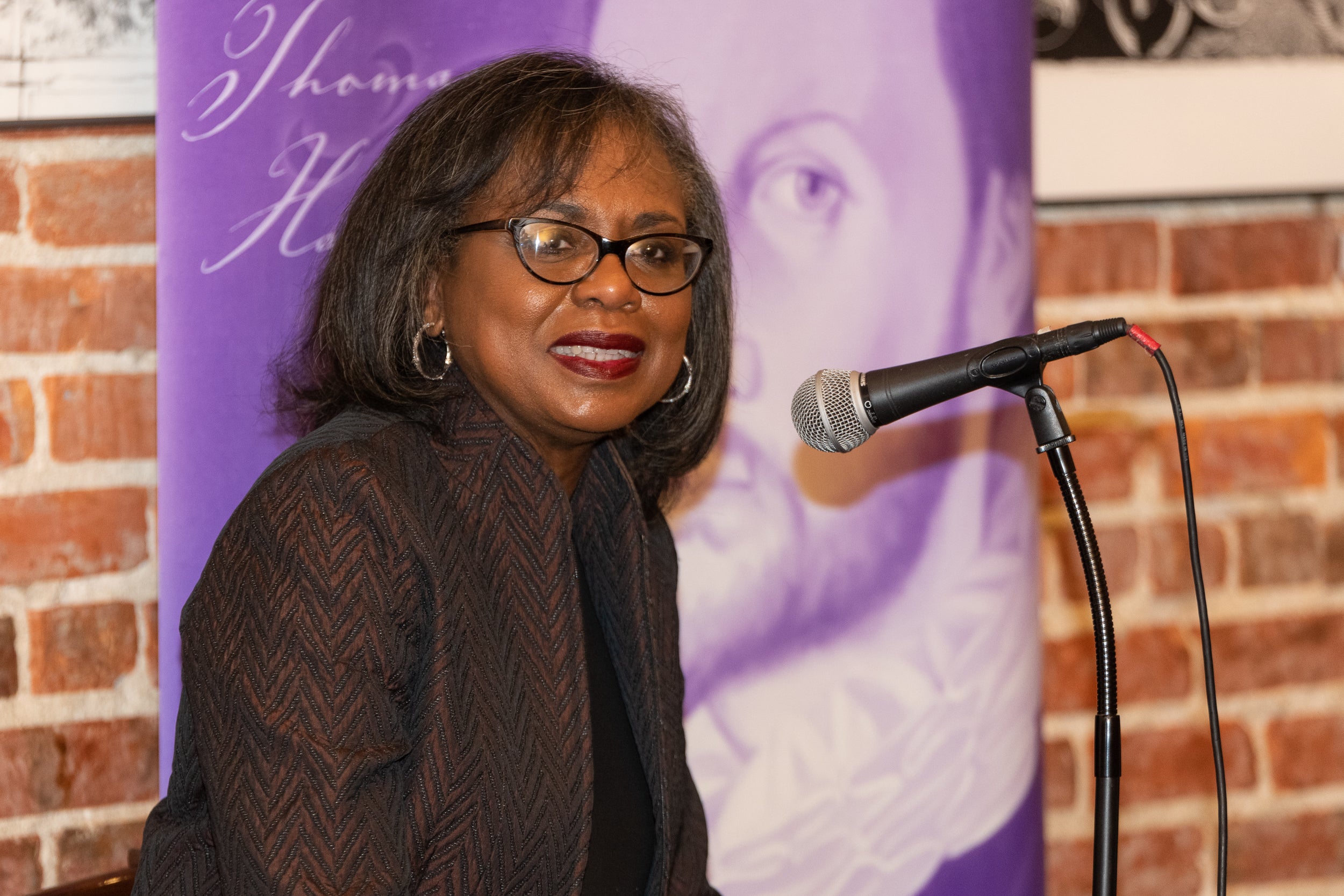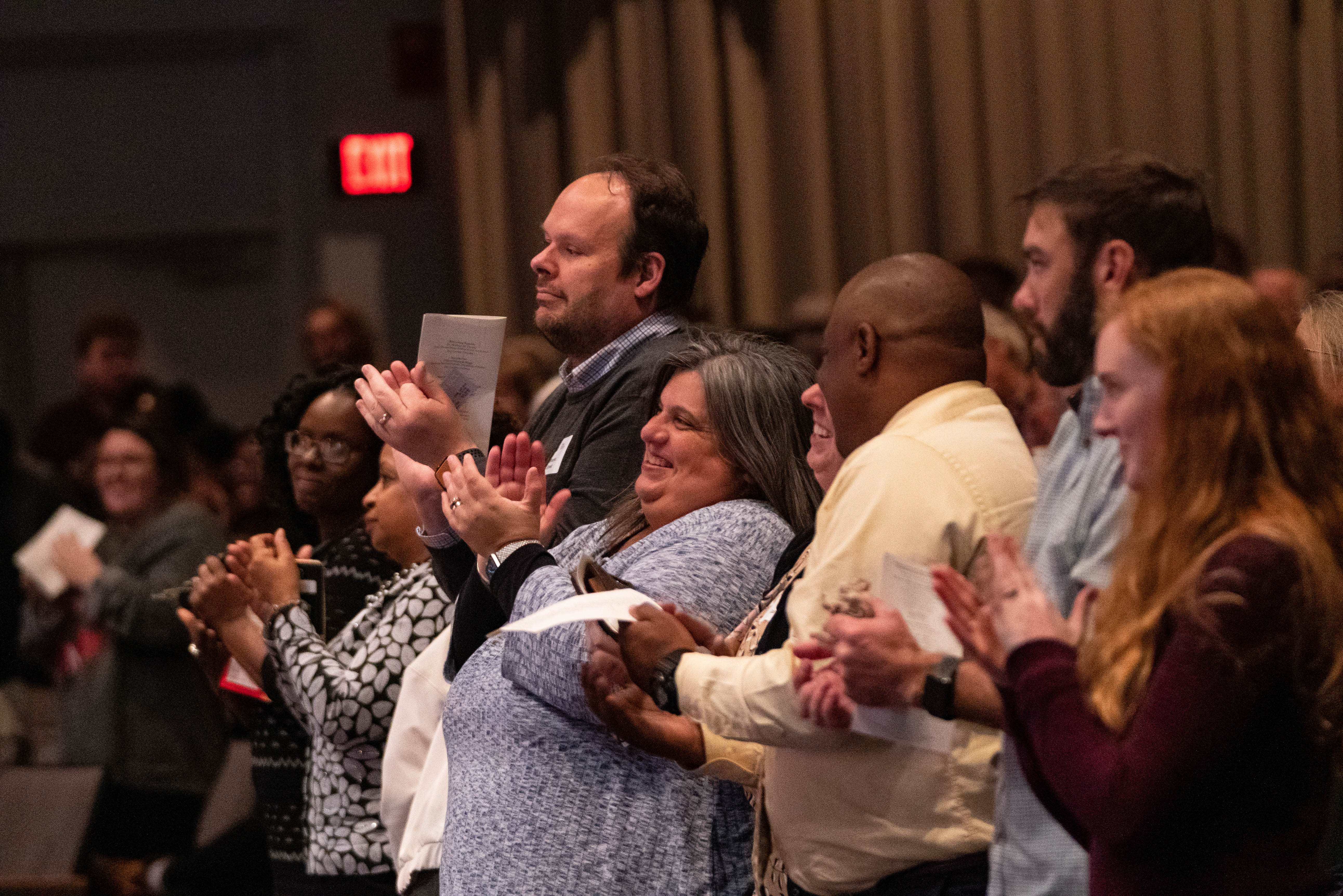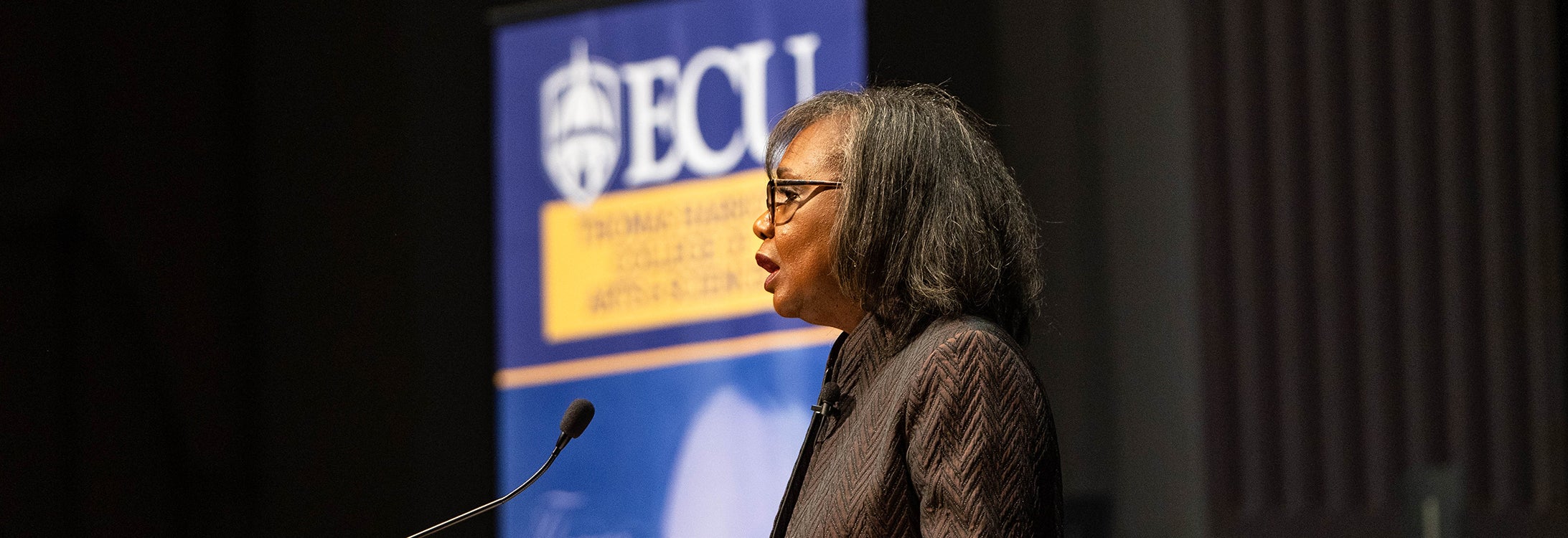MOMENT OF A SOCIAL MOVEMENT
Hill advocates for continued work in ending sexual harassment
Anita Hill, law professor at Brandeis University and a women’s and civil rights advocate, was welcomed with a standing ovation at East Carolina University’s Wright Auditorium on the evening of Nov. 15.
As the premier lecturer in the 2018-19 Voyages of Discovery Series, Hill spoke to a nearly full house on “Social Movement to Social Impact: Putting an End to Sexual Harassment in the Workplace.”

Prior to the evening event, Hill attended a reception in her honor at Starlight in downtown Greenville. (Photo by Rob Taylor Photography & Design)
Hill is famously known for her testimony in 1991 against then-Supreme Court Justice nominee Clarence Thomas about sexual harassment endured while he was her supervisor at the Department of Education and the Equal Employment Opportunity Commission. Currently, Hill is spearheading “Restoring the Vision,” a project to revive awareness of Title IX, the law mandating equal education and employment opportunities for women.
During the evening event, Hill addressed a number of issues that also were discussed earlier in the day when she met with 40 undergraduate and graduate students, and a handful of ECU faculty and staff, who had the unique opportunity to ask her questions and talk informally.
She briefly discussed her background and achievement of becoming the first African-American tenured faculty at the University of Oklahoma College of Law, but she said that she did not want that to be her last achievement. She told students that they need to take risks and chances in their lives, even when they think they have reached their goals.
Students asked Hill about her views on what has and has not changed in the past 27 years in respect to sexual harassment, and racial and gender bias; how the Supreme Court confirmation hearing of Thomas in 1991 was different from Judge Brett Kavanaugh in 2018; and if the process of handling sexual harassment and assault needs to change – topics Hill also addressed in her evening presentation.
Hill indicated that the fight has changed over the years but there are still many opportunities to get beyond the current structure.
“We’ve got a lot of work to do, but I’m very hopeful,” Hill said. “There’s always some window for change.”
She stated there is still a need to persuade others that change needs to happen. Conversations should take place before crises occur and people need to have empathy for those who are harassed or assaulted.
According to Hill, people still view sexual harassment as a personal issue. They may believe if a person receives counseling or therapy, that the problem goes away.
“That’s the approach we’ve been taking,” Hill said.
However, Hill stated sexual assaults are “traumatic experiences” that may go unreported and can have lifelong repercussions on an individual’s relationships, health and economic well-being.
“We are at a point where it’s a human crisis; health crisis; safety crisis,” Hill said. “We have to understand this is a problem that affects all of us.”

Hill received a standing ovation both at the beginning and end of her Voyages presentation on Nov. 15 in Wright Auditorium. (Photo by Cliff Hollis)
During the evening event, Hill also touched on the history of harassment cases. According to Hill, prior to the 1970s, sexual harassment got little social or legal attention. Women’s magazines were the only entity to address the issue.
It wasn’t until a 1986 Supreme Court Case that arose from a suit by Mechelle Vinson against a former employer that finally recognized that sexual harassment of an employee was a violation of federal law against sex discrimination in the workplace. In the 1990s the EEOC issued guidelines for employers on what rules and conducts were and were not acceptable in the workplace, and in 2011 guidelines for Title IX were developed.
“Was there a movement in 1991?” Hill asked. She said that it wasn’t the same public display as the civil rights movement, but there were “small steps” that something was happening, minds were changing and people were changing.
“It was a movement of the minds and hearts of people,” Hill said. People were “finally taking the problem seriously and doing something about it.”
Although the movement has been a slow process, reignited by social media and #MeToo, Hill reiterated what she told student earlier in the day. She told the audience that she is encouraged and that the progress needs to continue.
“I have a reason to be hopeful,” Hill said. “We absolutely must move ahead.”
Hill concluded by stating the “movement starts with a dream. I take my hope from looking out at this audience. Our movement may not be landmark cases but it will have a lasting effect.”

Hill spoke with a group of 40 ECU undergraduate students, graduate students, and a few faculty and staff earlier in the afternoon. (Photo by Cliff Hollis)
